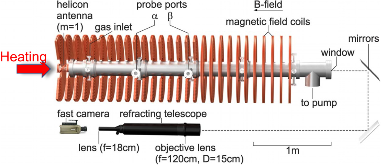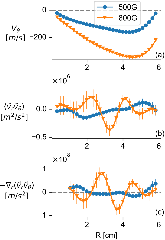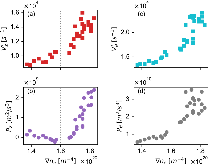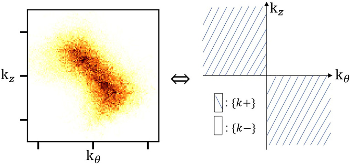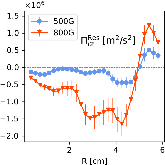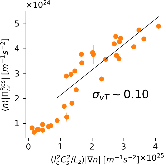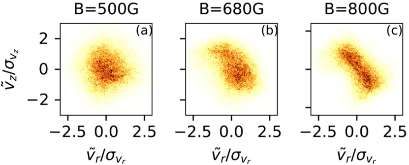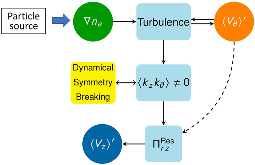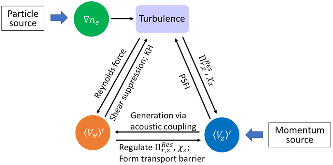Generation of parasitic axial flow by drift wave turbulence with broken symmetry: Theory and experiment
- Univ. of California, San Diego, CA (United States). Center for Energy Research
- Center for Astrophysics and Space Sciences, University of California San Diego, La Jolla, California 92093, USA
- Univ. of California, San Diego, CA (United States). Center for Energy Research, and Center for Astrophysics and Space Sciences; Southwestern Inst. of Physics, Chengdu, Sichuan (China)
- Univ. of California, San Diego, CA (United States). Center for Energy Research; Southwestern Inst. of Physics, Chengdu, Sichuan (China)
Detailed measurements of intrinsic axial flow generation parallel to the magnetic field in the controlled shear decorrelation experiment linear plasma device with no axial momentum input are presented and compared to theory. The results show a causal link from the density gradient to drift-wave turbulence with broken spectral symmetry and development of the axial mean parallel flow. As the density gradient steepens, the axial and azimuthal Reynolds stresses increase and radially sheared azimuthal and axial mean flows develop. A turbulent axial momentum balance analysis shows that the axial Reynolds stress drives the radially sheared axial mean flow. The turbulent drive (Reynolds power) for the azimuthal flow is an order of magnitude greater than that for axial flow, suggesting that the turbulence fluctuation levels are set by azimuthal flow shear regulation. The direct energy exchange between axial and azimuthal mean flows is shown to be insignificant. Therefore, the axial flow is parasitic to the turbulence-zonal flow system and is driven primarily by the axial turbulent stress generated by that system. The non-diffusive, residual part of the axial Reynolds stress is found to be proportional to the density gradient and is formed due to dynamical asymmetry in the drift-wave turbulence.
- Research Organization:
- Univ. of California, San Diego, CA (United States)
- Sponsoring Organization:
- USDOE
- Grant/Contract Number:
- FG02-04ER54738; FG02-07ER54912
- OSTI ID:
- 1524571
- Alternate ID(s):
- OSTI ID: 1436554
- Journal Information:
- Physics of Plasmas, Vol. 25, Issue 5; ISSN 1070-664X
- Publisher:
- American Institute of Physics (AIP)Copyright Statement
- Country of Publication:
- United States
- Language:
- English
Web of Science
How shear increments affect the flow production branching ratio in CSDX
|
journal | June 2018 |
Simultaneous measurements of turbulent Reynolds stresses and particle flux in both parallel and perpendicular directions in a linear magnetized plasma device
|
journal | October 2018 |
Similar Records
The ecology of flows and drift wave turbulence in CSDX: A model
Modelling enhanced confinement in drift-wave turbulence
